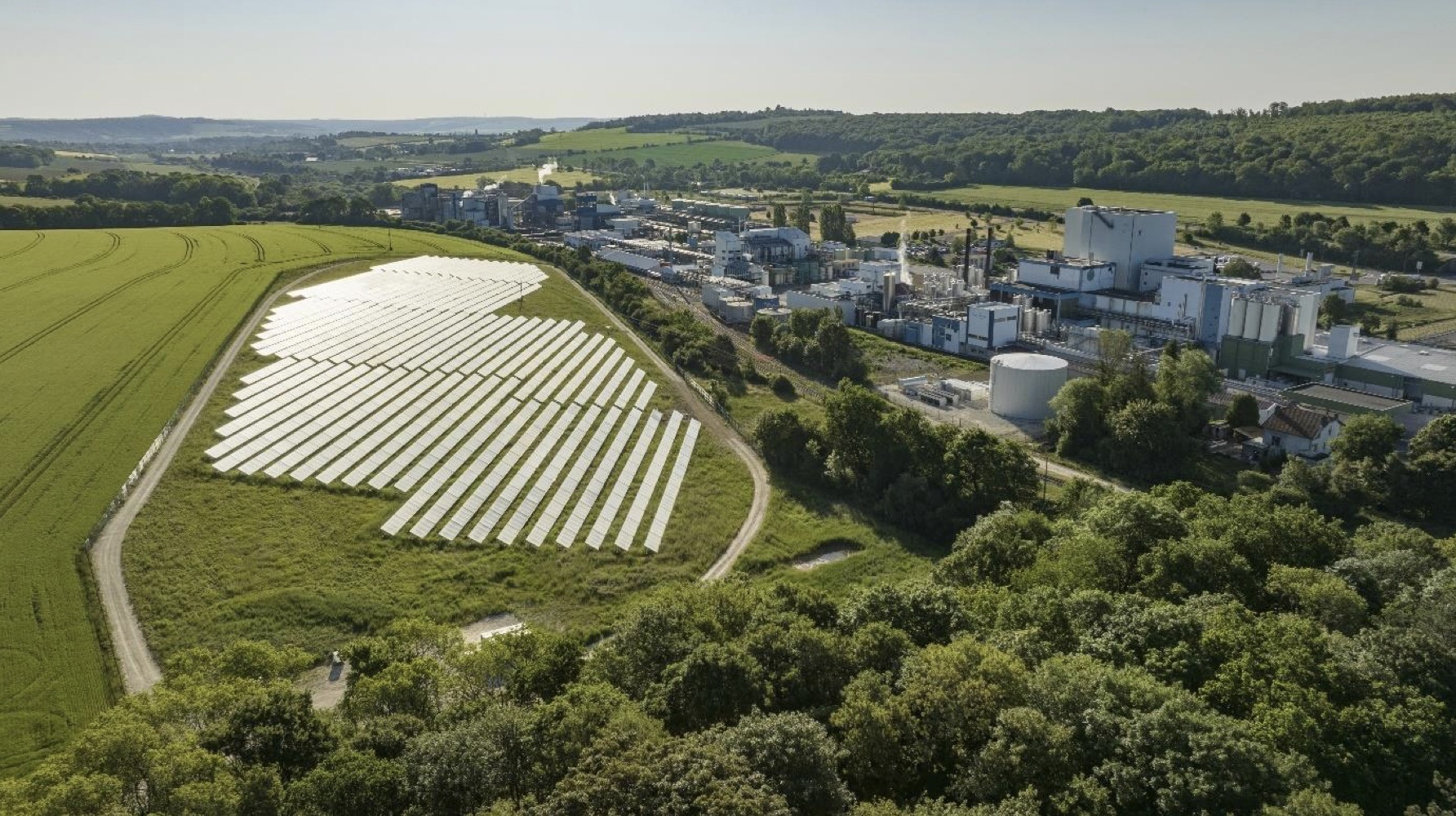The new site, named ‘Lactosol’, aims to address sustainability issues by reducing the company’s carbon footprint and will supply heat to its adjacent Verdun site for the next 25 years.
The Verdun site produces whey powder, obtained by drying whey (lactoserum) that is supplied for use in infant, clinical and sports nutrition products. Officially opened in November 2021, in collaboration with renewable thermal energy pioneer Newheat, the drying tower at the Verdun site was initially fed by a gas boiler.
“After the major renovations of the Verdun site and the inauguration of the new drying tower in 2021, it was essential to continue our transformation by focusing on reducing our energy footprint,” said Jean-Luc Bordeau, managing director of Lactalis Ingredients.
Solar heat for the future
The new Lactosol solar thermal power plant covers 15,000 square meters and boasts a maximum power output of approximately 13 MWth. Equipped with a 3,000 square meter storage tank, capable of storing several days worth of heat production, the facility works to ensure a continuous supply even during night and cloudy days.
This approach allows the Verdun site to cut its CO2 emissions by a reported 2,000 tons per year, equating to 7% of the site’s total emissions.
By incorporating solar thermal energy into its operations, Lactalis aims to reduce gas consumption by 6% at the Verdun site, with further plans to install a biomass boiler by 2026, replacing nearly 50% of gas consumption with renewable energy.
Lactalis whey powder process
The company produces whey powders through cheese manufacturing, by skimming and concentrating the byproduct before being spray dried.
The whey (6% total solids 94% water) initially goes through an evaporation process to reduce water content so that the solids are 60% i.e. a 10x concentration.
Lactalis then “seeds” the whey concentrate with powder produced from a previous batch, which allows the lactose to change to a useable consistency—a process known as crystallisation, which takes six to 10 hours.
The concentrate is then fed into a tower full of hot air and sprayed into fine droplets, where the water evaporates, and the whey solids dry into powder form.
Finally, the powder is passed over a fluid bed to condition it to the exact moisture required.
Newheat
The project received financial backing from Bordeaux-based Newheat and its partners, including a €13 million bank financing deal in 2020.
“Back in 2020, the Lactalis site at Verdun was already a frontrunner in choosing solar heat to decarbonise the activity of its future drying tower,” said Hugues Defreville, president and co-founder of Newheat.
“Today, the renewable heat sector, and solar thermal energy in particular, is experiencing a significant upsurge. You can bet that the example of Lactalis, which is a global leader in dairy products and recognised for its industrial excellence, will encourage other manufacturers to envisage these virtuous solutions for their own decarbonisation projects.”
Following the successful inauguration, Newheat, having recently announced a fundraising of €30 million, is planning 15 more projects over the next three years, with a total investment of €150 million.
These projects, mainly located in France, are expected to deliver an annual volume of 200 GWh of renewable heat.
